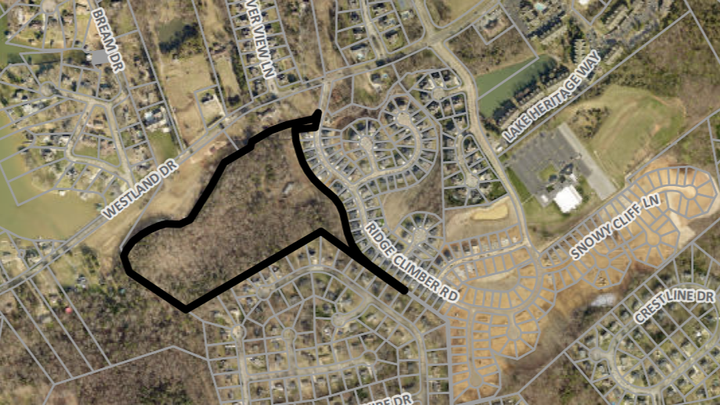
Protect Westland Oaks from Overdevelopment
Donation protected
These funds are to be utilized for legal fillings and possibly PR engagement to raise awareness.
Westland Oaks and surrounding communities against further multi-family development attached to our neighborhood. Traffic concerns, environmental concerns, and loss of uniformity in the makeup of the subdivision. Other nearby communities have offered support in this cause.
In May 2024, Knox County Planning approved a new housing development on 22 acres at 9900 Westland Drive, set to feature 68 townhouses with access via Ridge Climber Road in Westland Oaks. This project will increase the size of the Westland Oaks subdivision, which currently has 174 homes, to approximately 242 residences, with potential future expansion to between 259 and 331 units. The property, purchased by Mesana Investments LLC in 2017 and transferred to Westland Oaks TH LLC in 2021, was designated for development without requiring a traffic impact study due to the phased construction approach. Although federal HUD funding was secured for the project, which includes Projects-Based Voucher assistance, the development's environmental assessment concluded there would be "no significant impact," allowing the project to proceed without additional environmental review.
Residents have expressed concerns over the additional strain on Westland Drive, which they argue is ill-equipped to handle the increase of the already unbearable traffic, potentially creating congestion and safety hazards for both drivers and pedestrians. The lack of adequate pedestrian infrastructure, coupled with the area's popularity for walking and biking, raises safety concerns, particularly for families. Additionally, the development will require clearing wooded areas, resulting in the loss of wildlife habitats and further reducing local green space. Community members are calling for Knox County to either delay the project for further study or collaborate with developers to implement traffic mitigation measures and ensure minimal environmental disruption to preserve the character of the neighborhood.
Impact on Traffic
The addition of extra housing units to our neighborhood is likely to exacerbate already present traffic issues, such as congestion at key intersections and longer travel times during peak hours. An increase in residential density typically adds more vehicles to local roads, potentially overwhelming infrastructure not designed for such growth. Streets that were once quieter may experience more vehicle noise and frequent stops from delivery services and ride-sharing. Nearby main roads and thoroughfares could also see increased usage, further straining traffic flow in the broader area.
Mitigating these effects may require improvements like additional lanes, upgraded signals, or enhanced pedestrian and bike infrastructure to balance the traffic load.
Impact on Environment
Intensified environmental impacts, such as increased air pollution from additional vehicle emissions and noise pollution from heightened traffic flow. The rise in vehicle usage can contribute to poorer air quality, especially in areas already facing congestion. Paved surfaces, such as roads and driveways, may lead to increased stormwater runoff, which can strain local drainage systems and impact nearby ecosystems. The loss of green space for housing development may further reduce biodiversity and increase the urban heat island effect.
Mitigating these environmental impacts could involve incorporating green infrastructure, promoting public transportation, and encouraging sustainable commuting options to reduce carbon emissions and maintain ecological balance.
Impact on EMS First Responders
Potential impact to emergency response times due to increased traffic congestion and limited road capacity. Additional vehicles on local streets, especially during peak hours, can create delays for emergency vehicles navigating through narrow or crowded roads. Intersections and key access points may become bottlenecks, further complicating response efforts in critical situations. If the neighborhood's infrastructure is not upgraded to accommodate the increased demand, emergency services may face challenges reaching homes promptly.
To mitigate these risks, measures such as improved traffic management, optimized routing for emergency vehicles, and ensuring clear access routes could be necessary to maintain timely and efficient emergency response.
Organizer and beneficiary
Westland Oaks
Organizer
Knoxville, TN
Serese Marotta
Beneficiary